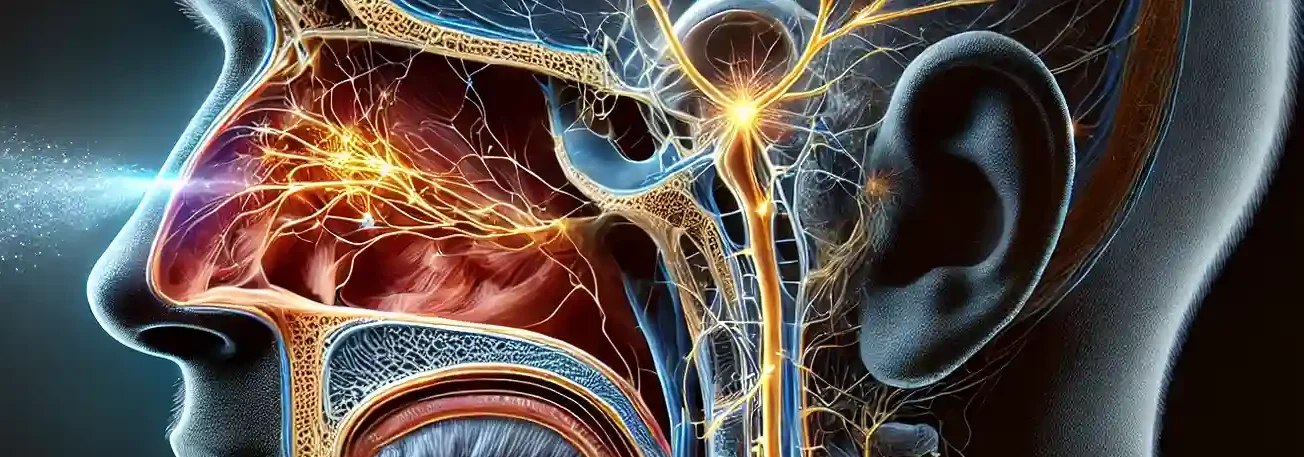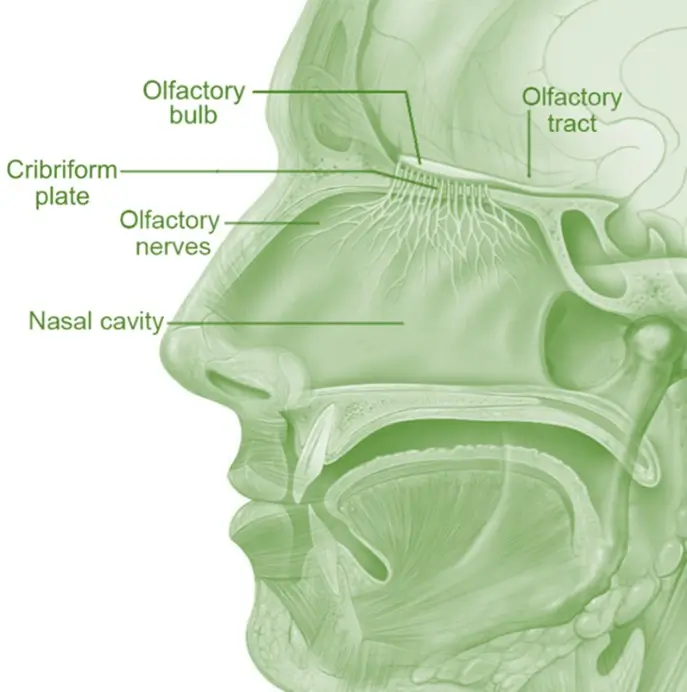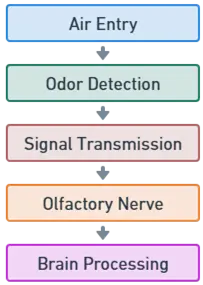- The nose is a sensory organ primarily responsible for the sense of smell (olfaction) and plays a significant role in respiration.
- It is composed of several structures that work together to detect and process odours and filter, warm, and humidify the air we breathe.
This is a sample ad placement!
Structure of the Nose
Nose is divided into external and internal parts:
1. External Nose
- Nostrils (Nares): The external openings of the nose that allow air to enter.
- Nasal Bridge: The bony and cartilaginous structure that supports the nose and provides its shape.
- Alae: The sides of the nostrils, composed of cartilage and soft tissue, helping shape the nose.
This is a sample ad placement!
2. Internal Nose
- Nasal Cavity: A hollow space behind the nostrils, divided into two chambers by the nasal septum, which is made of cartilage and bone.
- Nasal Septum: Divides the nasal cavity into two nostrils and supports airflow.
- Turbinates (Conchae): Curved bony structures inside the nasal cavity that increase surface area to warm, humidify, and filter air.
- Olfactory Epithelium: A specialized region located in the upper part of the nasal cavity containing olfactory receptor neurons responsible for detecting smells.
- Sinuses: Air-filled spaces in the bones around the nose (frontal, maxillary, ethmoid, and sphenoid sinuses). These sinuses lighten the skull and produce mucus that drains into the nasal cavity.
- Cilia: Tiny hair-like structures that line the nasal cavity and sinuses. They move mucus and trapped particles toward the throat for removal.
Mechanism of Smelling (Olfaction)
- The mechanism of smelling involves detecting odor molecules in the air and converting them into electrical signals that the brain can interpret as olfactory information.
This is a sample ad placement!
Here’s a summary of the main steps involved in the mechanism of smelling:
- Air Entry: When air enters the nostrils, it passes through the nasal cavity.
- Odor Detection: As air flows over the olfactory epithelium, odor molecules bind to olfactory receptor cells.
- Signal Transmission: The receptor cells convert the chemical signals from odor molecules into electrical signals.
- Olfactory Nerve: These electrical signals are sent through the olfactory nerve (Cranial Nerve I) to the olfactory bulb in the brain.
- Brain Processing: The brain processes these signals, interpreting them as specific smells.
This is a sample ad placement!
Mechanism of Breathing
- Air Filtration: As air enters the nasal cavity, it is filtered by the nasal hairs and mucus, trapping dust, pollen, and other particles.
- Air Humidification and Warming: The turbinate in the nasal cavity help humidify and warm the incoming air to body temperature, making it suitable for the lungs.
- Passage to Lungs: The filtered, humidified, and warmed air passes through the pharynx (throat), down the trachea, and into the lungs for gas exchange.
Diseases of the Nose
1. Rhinitis:
- Inflammation of the nasal mucous membrane, often caused by allergies (allergic rhinitis) or infections (viral rhinitis or common cold). Symptoms include a runny nose, sneezing, and congestion.
2. Sinusitis:
- Inflammation or infection of the sinuses, often causing sinus pressure, headaches, nasal congestion, and facial pain.
This is a sample ad placement!
3. Nasal Polyps:
- Soft, noncancerous growths inside the nasal cavity or sinuses that can cause congestion, reduced sense of smell, and difficulty breathing.
4. Deviated Septum:
- A condition where the nasal septum is displaced to one side, which may cause breathing difficulties, snoring, or recurrent sinus infections.
5. Epistaxis (Nosebleeds):
- Bleeding from the nose, often due to dry air, injury, or hypertension.
This is a sample ad placement!
6. Anosmia:
- The loss of the sense of smell, which can result from viral infections, head injuries, or neurodegenerative diseases such as Alzheimer’s.
7. Nasal Fractures:
- Trauma to the nose, which can damage cartilage, bone, and the nasal septum, leading to deformity and breathing issues.
Functions of the Nose
1. Respiration:
- The nose is the primary entry point for air during breathing.
- It filters, warms, and humidifies air before it enters the lungs.
This is a sample ad placement!
2. Olfaction (Sense of Smell):
- The nose houses the olfactory epithelium, which is responsible for detecting odors.
- This is important for enjoying food, detecting dangers (like smoke or spoiled food), and enhancing taste through smell.
3. Filtration of Air:
- The hairs and mucus in the nasal cavity trap dust, bacteria, and other particles, preventing them from entering the respiratory system.
4. Humidification and Temperature Regulation:
- The nasal cavity warms and humidifies air to protect the delicate tissues of the respiratory system and ensure efficient gas exchange in the lungs.
This is a sample ad placement!
5. Defense Mechanism:
- Mucus and cilia in the nasal passages help remove foreign particles and pathogens, reducing the risk of infection.
6. Resonance for Speech:
- The nasal cavity helps with vocal resonance, affecting the quality of the voice.
Thank you for reading from Firsthope's notes, don't forget to check YouTube videos!



